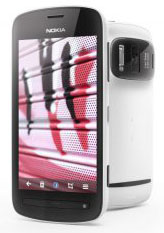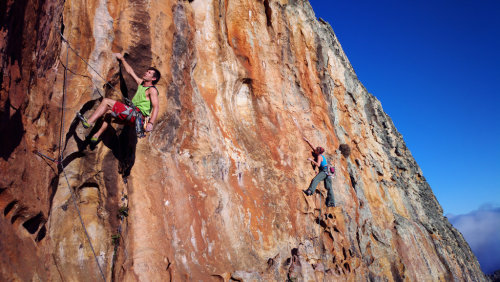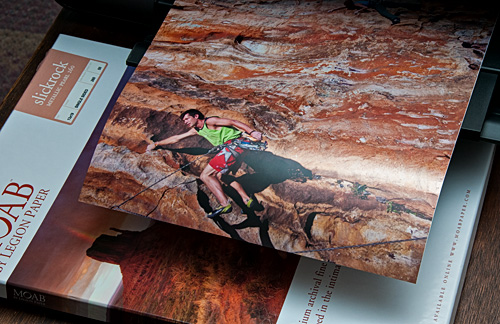The Nokia 808 PureView—Making Megapixels Zoom
posted Wednesday, March 14, 2012 at 6:49 PM EST
 That buzz you've been hearing isn't a swarm of early spring bees. It's the discussion about Nokia's 808 PureView smart phone, the one with a 41-Mp sensor tucked inside.
That buzz you've been hearing isn't a swarm of early spring bees. It's the discussion about Nokia's 808 PureView smart phone, the one with a 41-Mp sensor tucked inside.
That's bigger than the 36.3-Mp snesor in the Nikon D800.
A week ago Damian Dinning, the head of imaging experience for Nokia smart devices, explained the concept in an article on the Nokia 808. He was there at the birth.
It isn't about the megapixels, he argued, explaining "the innovation and news is not the number of pixels but rather how those pixels are used."
HOW TO ZOOM
The team, Dinning said, was working on "imaging rich" phones that would include optical zoom. Mobile phone screen sizes were getting bigger and customers were demanding better image quality from their phones, factors which pushed the limits of optical zoom design.
The team nearly brought to market a device that used folded optics to zoom (like many ultracompact digicams) but scuttled the project due to the size of the camera module and its performance.
"It became clear to us that if we were ever to meet the increasing expectations and evolving market dynamics we were going to need to find a new direction in imaging," Dinning said.
As the team developed different optical zoom modules, they ran into significant problems: "performance in low light; image sharpness at both ends of the zoom range; audible noise problems; slow zooming speed and lost focus when zooming during video."
To use optical zoom, "you'd need to accept a bigger, more expensive device with poor f no., a small and noisy image sensor and lower optical resolution just to be able to zoom." Not good.
OPTICAL OUT
Then came the key discovery, inspired by the company's understanding of how to integrate large image sensors into small camera modules. The trick was to "use a sensor with somewhat higher resolution than needed at the time but output a lower resolution image than the sensor input resolution, possibly adding some upscaling/interpolation to provide a meaningful enough zoom range."
In short, they abandoned the idea of using optical zoom in favor of, well, digital zoom.
Time out.
TWO KINDS OF DIGITAL ZOOM
In the camera world we inhabit, digital zoom is not held in very high regard. But there are two variants of the concept.
In the common variant, a crop of the sensor is upsampled to the same image dimensions as a non-digital zoom image would be. If, for example, you have a 2000x3000 sensor and take a 1000x1500-pixel crop in digital zoom mode (to zoom in on the scene), the camera would interpolate that back up to 2000x3000 so it would be the same size as all your other images.
As sensors became larger, however, the upsampling became optional. In this variant of digital zoom -- often tagged Smart or Intelligent -- the crop simply isn't upsampled. So your 16-Mp camera takes 10-Mp or 5-Mp images when smart digital zoom is engaged. And that's plenty good enough for prints up to 13x19.
But in the camera world, you'll notice, all of the sensor pixels are normally used except when using digital zoom.
SMALL IS BEAUTIFUL
Nokia turned this approach on its head by establishing a 5-Mp image size for the 808 PureView and downsampling everything to it. A 5-Mp camera in a smart phone is still pretty cool. On a digicam, not so much.
Why would they downsample everything?
Downsampling "could create an output image with excellent low light performance, excellent optical performance as well as maintaining a low f no," Dinning explained. "Instead of trade-offs, there would be significant benefits, especially at the wide range of the zoom. As an additional benefit the file sizes would be small due to low noise whilst the level of detail would be way beyond anything seen before thanks to the pixel oversampling."
So by pixel binning -- as some digicams do in low light Scene modes that save smaller image sizes -- you gain some imaging chops. You can zoom. Noise is averaged out. And the file size is kept low enough to fire off to Flickr or FaceBook, etc.
There is an option to save the 41-Mp image in the 808 PureView (and zoom later in-camera), Dinning noted, but in typical use, you would be recording 5-Mp images.

41-Mp image from the 808 PureView
Dave did a little math to explain the 41-Mp sensor size. "Zoom is linear, while pixels vary as an area or the square of the magnification. So 3x zoom = 9x the number of pixels. 3x wider and 3x taller: 41/9 = 4.56, so they're actually pushing it slightly to come up with a full 5 megapixels."

Same image printed on Moab Slickrock Metallic Pearl on the Canon Pro-1
If Nokia were a camera company instead of a phone company, they would be marketing a 41-Mp camera featuring 3x smart digital zoom at a 5-Mp image size. But as a phone company, they're selling a 5-Mp smart phone with 3x zoom and great low light performance.
Nokia has posted some Nokia808 PureView images on Flickr. Several image sizes are available for each image, including the 7728x4354 original and 1024x577 downsampled image. We printed a full resolution image on 13x19 Moab Slickrok Metallic Pearl and are pretty sure nobody is going to believe it came from a smart phone.
The company has also posted a white paper on its PureView imaging technology.